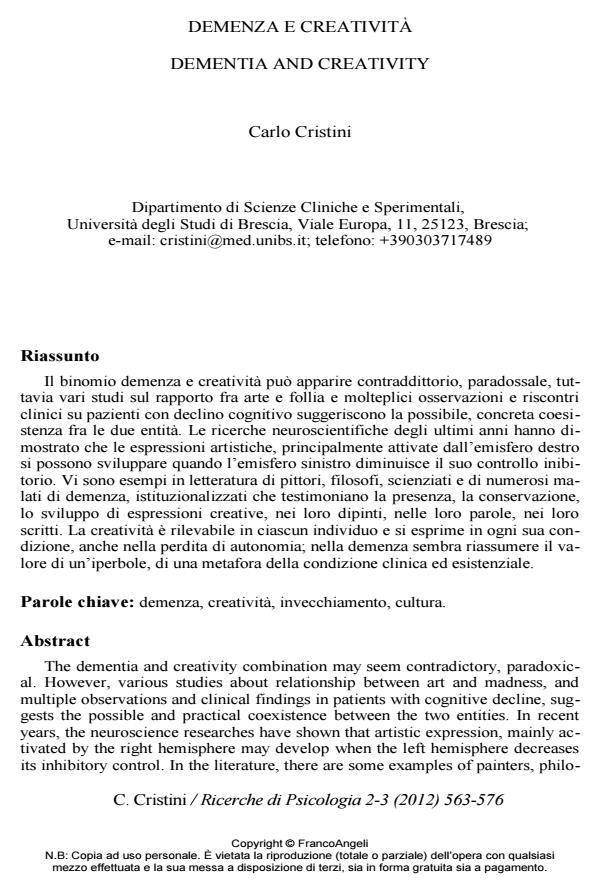Dementia and creativity
Journal title RICERCHE DI PSICOLOGIA
Author/s Carlo Cristini
Publishing Year 2013 Issue 2012/2-3
Language Italian Pages 14 P. 563-576 File size 198 KB
DOI 10.3280/RIP2012-002026
DOI is like a bar code for intellectual property: to have more infomation
click here
Below, you can see the article first page
If you want to buy this article in PDF format, you can do it, following the instructions to buy download credits

FrancoAngeli is member of Publishers International Linking Association, Inc (PILA), a not-for-profit association which run the CrossRef service enabling links to and from online scholarly content.
The dementia and creativity combination may seem contradictory, paradoxical. However, various studies about relationship between art and madness, and multiple observations and clinical findings in patients with cognitive decline, suggests the possible and practical coexistence between the two entities. In recent years, the neuroscience researches have shown that artistic expression, mainly activated by the right hemisphere may develop when the left hemisphere decreases its inhibitory control. In the literature, there are some examples of painters, philo- sophers, and many institutionalized people with dementia, testifying to the presence, conservation, development of creative expressions in their paintings, in their words, in their writings. Creativity is present in each individual and is expressed in every condition; dementia seems to sum up the value of a hyperbole, a metaphor of clinical and existential condition.
Keywords: Dementia, creativity, aging, culture.
- Carlo Cristini: un ricordo a pi&ugrav Alessandro Antonietti, Carlo Cipolli, Rossana De Beni, Anna Maria Della Vedova, Santo Di Nuovo, Mario Fulcheri, Gianbattista Guerrini, Luciano Peirone, Alessandro Porro, Pietro Vigorelli, in RICERCHE DI PSICOLOGIA 4/2022 pp.1
DOI: 10.3280/rip2021oa13098
Carlo Cristini, Demenza e creatività in "RICERCHE DI PSICOLOGIA " 2-3/2012, pp 563-576, DOI: 10.3280/RIP2012-002026